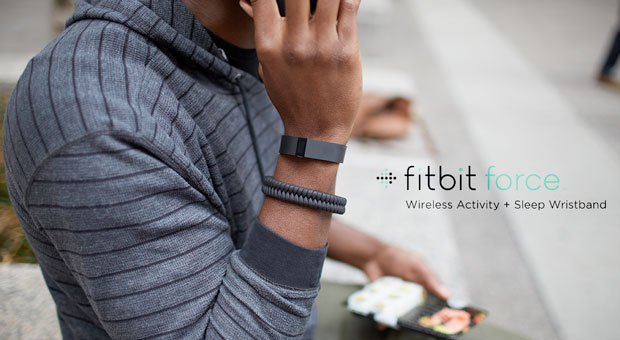In October 2013, GigaOm Mobilze, the Californian conference on all things up-and-coming in the industry, announced the Internet of Things as the next bit hype – with a special focus on health- and fitness- monitoring wristbands. Were their predictions correct? We revisit the topic of fitness wristbands, half a year after.
An Example of Fitness Wristbands Today
The Winning Combination
Less than a year ago, the creators were still debating on what the optimal combination should be. Companies has understood since 1980, when the first chip in shoes had been introduced, that the solution should be portable. It should ideally have onboard capability for music and blue tooth. And most of all, it should be personalized. Yet, the product designers soon discovered this recipe wasn’t all that obvious. There were some challenges to be solved first.
Industry Challenges
When discussing the main challenges the industry faced at the time, Paul Gaudio, the head of Adidas Interactive, and Olof Schybergson, the CEO of service design firm Fjord, mentioned the following key challenges:
(1) The product category being so novel in itself, there are little standards to follow. In many ways it’s very challenging because there is very little to benchmark it to – it could go any one direction. On the other hand, it is an exciting opportunity as the new players get to envision what this technology should essentially be like. Mobile in itself took about a decade to mature to its current form (and it is still evolving!), so what we are witnessing is similarly the baby steps of this new industry. It’s not to be taken for granted, it is a difficult feat to define an entire industry.
(2) Consummers want less, not more. At any given time, they want to carry one item at most. Traditionally the items were either clip-ons (such as the iPod shuffle) or hidden in shoes, but the wrist seems like a good candidate because we already have the habit of wearing watches, not to mention the fact it “won’t introduce social awkwardness” (the way google eyeglasses may be doing right now). “We want to bring function with what you already use and have, instead of adding a new item”, Paul Gaudio explained.
Flops & Failures
There have been attempts at things that did not work, prior to reaching the products we now enjoy on the market. One of them was that a lot of effort was put into mobile apps, until marketers realized runners, for the most part, use exercise to disconnect and leave everything behind — they don’t want to stay connected!
The other mistake which has plagued the industry for a while at the start, is that, to put it in Olof Schybergson’s terms, “it is a category that is looking for the main functionality. Is it about lifestyle? Is it for extending your phone? Getting to “who is this for? and “what is its target market” is the most difficult.”
The Heart of the Matter
With some skepticism on consumers having to adopt yet another gadget with a new dashboard somewhere with new passwords and new online habits, I asked Paul Gaudio and Olof Schybergson whether adoption will, in their opinion, be an easy curve for this product. Their answer? “We left certain things out. And that’s the hardest question to ask you : What will we leave out?”
This indeed is the heart of the matter. Looking over the last few months, the industry has done well in terms of simplifying and creating a base product that consumers can easily grasp: a wristband that records your physical activity and charts it on a graph accessible through mobile and internet. The industry has now stepped into a second phase, with customization and targeting of products, as future trends will surely show.
FUTURE TRENDS
Analytics
Recently, a Canadian-based company put fundraised to produce their new “Airo Wristband”. The company had to cancel its pre-orders, as it decided it may need a little more perfecting before going out onto the market, but their idea takes the wearables a little further: they provide analysis while minimizing your input. They are currently working on developing a product that would be able to give you the nutritional breakdown of your food without you having to enter it manually, and it would be able to be proactive and help you take breaks for stress reduction, or getting more sleep, before your body becomes deprived of sleep or relaxation. Whereas most solutions on the market simply plot graphs for their users, the next wave of wearables might be able to interpret the data, and make personalized recommendations based on said data.
Complementing Tools
Scales are an excellent example of products that have already started to integrate with wearables.
New scales such as this smart food scale might soon integrate into fitness wristbands too, if the trend prevails, moving from laborious calorie-counting to integrated
One device, many users
Another innovative product that has come onboard recently is iBitz, which combined the electronic world of children and teens (a little bit like Tamagochis did a decade or two ago) with the concept of wearable tracking devices. The innovation lies not in the tracking device itself, but in the interface through which to view the results. Interestingly enough, the interface is able to change based on the user’s age group, displaying a game for children and teens, while displaying a plain dashboard for their parents.


